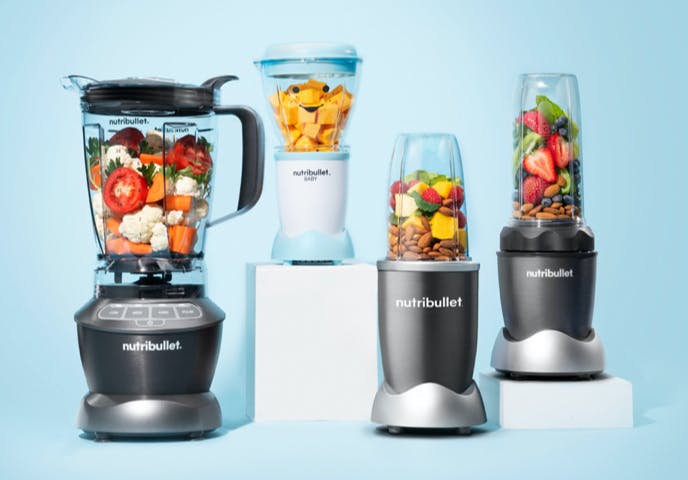The standard American diet lacks two major food groups: fruits and vegetables. The World Health Organization recommends eating five servings of fruits and vegetables daily to achieve overall good health. Spreading those servings across meals throughout the day doesn’t sound too daunting, but sadly, the average American continues to struggle to meet this daily goal.
There are many tips and tricks to get more fruits and vegetables in your meals, but it all starts with understanding the benefits of eating these foods. And no, unfortunately, potatoes do not count!
Vegetables are low in calories and high in nutrients, meaning that you get more bang for your buck in nutritional value. By eating larger volumes of food with lower caloric values, you can increase your vegetable intake. And due to the fiber and water packed into these foods, they will help keep you full! Additionally, veggies are rich in vitamins, minerals, and antioxidants that promote a healthy body.
You can get plenty of Vitamin C, folate, and potassium from many vegetables, as well as fruits. While fruits have higher carbohydrates and sugar contents than vegetables do, their fiber content helps decrease the rate at which sugar is released into the bloodstreams. Eating non-processed foods like fruits and vegetables can help support a healthy immune system, a healthy weight, and a healthy body overall.
Don’t be too quick to reach for the fruit cups and fruit snacks though! It is important to select the right types of fruits and vegetables. Convenience foods can seem ideal for on-the-go but many convenient food and vegetable products like fruit leathers and syrupy fruit cups are loaded with sugar, sodium, and chemicals. Here are some tips to help navigate grocery stores and select only the highest qualities of fruits and vegetables:
- Fresh foods are located at the perimeters of the stores. Fresh fruits and vegetables are the best options. Avoid shopping in the aisles since they are typically packed with processed foods.
- Look for frozen fruits and vegetables. If fresh produce is not feasible for your lifestyle or budget, frozen produce is the next best thing! Freezing fruits and vegetables helps stop certain nutrients from breaking down, preserving their nutritious integrity. Make sure to double check the ingredients and select those with no additives. They tend to have less added ingredients than those that are canned.
- Buy fruits packaged in their own juices, not syrups or heavy syrups, if you are purchasing canned goods. Always look for a label that says “low sodium” or “no added salt” too.
- Go for organic when buying foods on the dirty dozen list. These are the foods with the highest pesticide content, so it is best to purchase these items from an organic source.
So now that you know where to find the best fruits and vegetables for your health, let’s work on getting these foods into your diet. Fruits and vegetables are not just for lunch and dinner; they are perfect for breakfast too! Here are some tips for adding more fruits and vegetables into all of your meals:
Breakfast
- Add ¼ to ½ cup of fruit to cereal, oatmeal, or yogurt.
- Add ½ to 1 cup of chopped veggies (like mushrooms and spinach) to an omelet.
- Make smoothies that are at least 50 percent vegetables with ½ cups of fruits.
Lunch
- Add some crunch to sandwiches with lettuce, tomatoes, cucumbers, and grated carrots.
- Cut up sticks of cucumbers, peppers, carrots, cauliflower, bell peppers, and broccoli to enjoy with hummus dips.
- Add chopped vegetables or canned tomatoes to pastas or cauliflower to your favorite dishes like mashed potatoes.
- Add dried or canned beans and lentils to soups and stews.
Dinner
- Have a vegetable side dish like one cup of salad or ½ cup of cooked veggies.
- Short on time? Frozen veggies are quick and easy; just heat them up on a stove or in a microwave.
Snacks
- Add veggies that are easy to eat on-the-go like baby carrots. Persian cucumbers and sugar snap peas also go great with dips like hummus or plain Greek yogurt.
- Frozen bananas and grapes make fun and delicious snacks.
- Berries are perfect low sugar snacks. Have them with yogurt for some extra protein.
- Find fruits that are easy to carry around like bananas, apples, and pears.
Adding more fruits and vegetables into your diet can be simple. So how much should you be eating? Each day, you need five servings, preferably two servings of fruits and three servings of vegetables. Here is a breakdown of what counts as a single serving:
One Serving of Fruit =
- 2 small plums, 2 kiwis, or 3 apricots
- ½ cup of berries, 7 strawberries, or 14 cherries
- 1 medium-sized fruit like an apple, banana, pear, or orange
- ½ cup of chopped large fruits such as pineapple, papaya, or melon or ½ of a grapefruit
- 1 heaping tablespoon of dried fruits, 2 figs, or 3 prunes
One Serving of Vegetables =
- 1 cup of dark leafy greens like spinach, lettuce, spring mix
- ½ cup of chopped veggies like broccoli, cucumbers, and peppers
- 3 tablespoons of cooked veggies such as kale, green beans, and spinach
- 3 heaping tablespoons of black beans, kidney beans, and other legumes
Below are a few photos to help show what a daily recommended amount of fruits and vegetables should look like:

Including a variety of fruits and vegetables in your diet not only promotes a healthy body, but also helps decrease the risk of certain chronic diseases when paired with a healthy lifestyle. So get your five servings of fruits and vegetables to ensure that you stay strong and healthy every day!




















